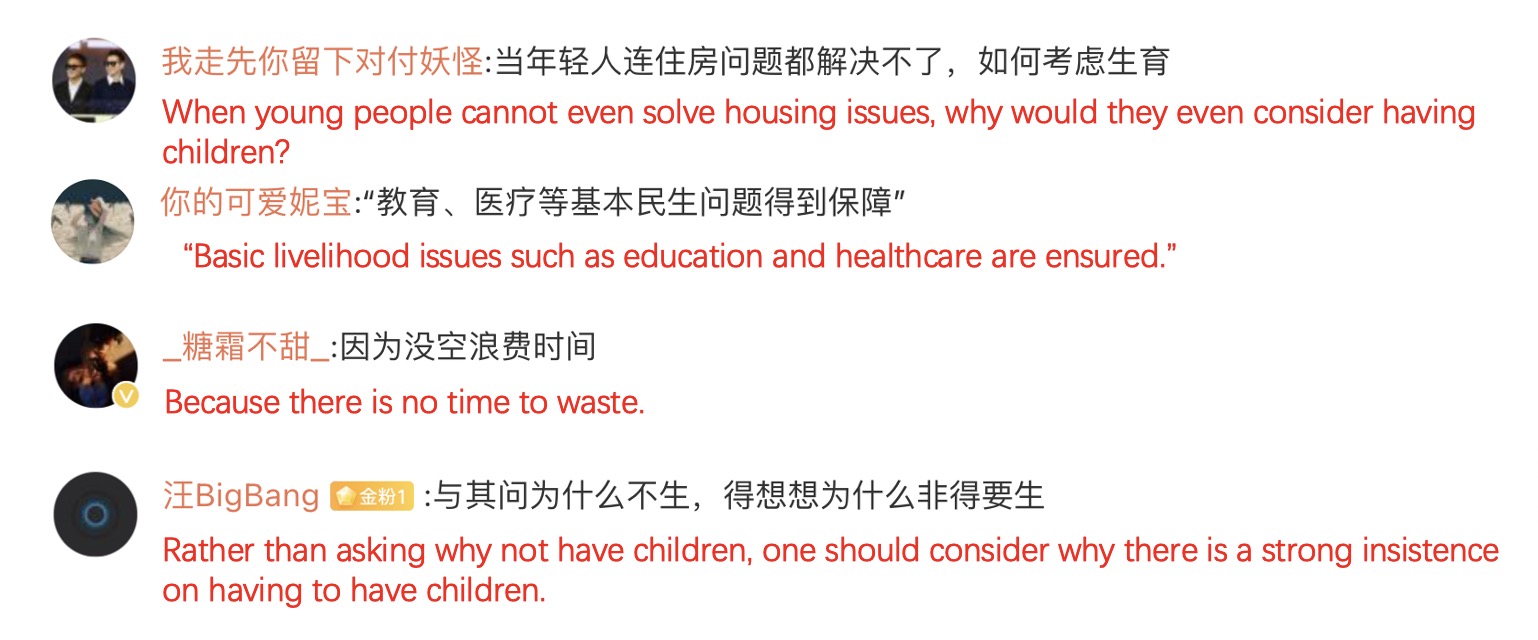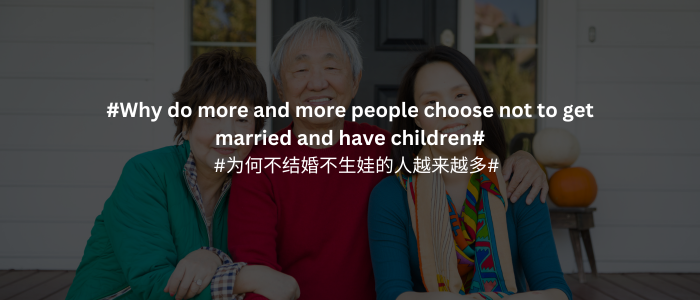Despite the various endeavors made to encourage population growth after the abandonment of the one-child policy in 2015, China had only 9.56 million births in 2022, marking a record low since 1950. With a fertility rate as low as 1.09 in 2022, it seems China has fallen into the “low-fertility trap,” a concept that suggests the challenges in increasing the fertility rate once it drops below 1.5 mainly due to socio-economic factors. On Weibo, netizens were having heated discussions in terms of #Why do more and more people choose not to get married and have children# (为何不结婚不生娃的人越来越多) in the 2nd week of January, gaining over 3 million views.
Download the full report on the She economy in China!

Economic factors in decision-making for parenthood
Another hashtag trending at the same time, #the opportunity cost and child-bearing cost to consider before getting married and having kids# (结婚生娃要考虑的机会成本与生育成本), may shed light on this issue. The cost of raising a child to the age of 18 relative to per capita GDP in China is 6.9 times. This makes it the second most expensive country to raise children, secondary to South Korea. Apart from the direct expenses associated with raising children. Furthermore, other costs, such as time and missed opportunities when nurturing their offspring, especially for women, also play crucial roles in contributing to lower fertility rates in China. According to a poll on “Would you be willing to have children if a house is provided,” around 62.6% of the respondents expressed their willingness to do so. This indicates that economic factors are one of the major considerations when it comes to childbearing.

China navigates the ‘Low-Fertility Trap’ post one-child policy
- China recorded a historic low of 9.56 million births in 2022 despite efforts to encourage population growth after the one-child policy ended in 2015.
- The fertility rate dropped to 1.09 in 2022, indicating China’s susceptibility to the “low-fertility trap,” with challenges in raising fertility rates below 1.5 due to socio-economic factors.
- Economic factors significantly impact childbearing decisions, as seen in a poll where 62.6% expressed willingness to have children if provided a house, emphasizing the role of economic considerations in China’s declining fertility rates.





